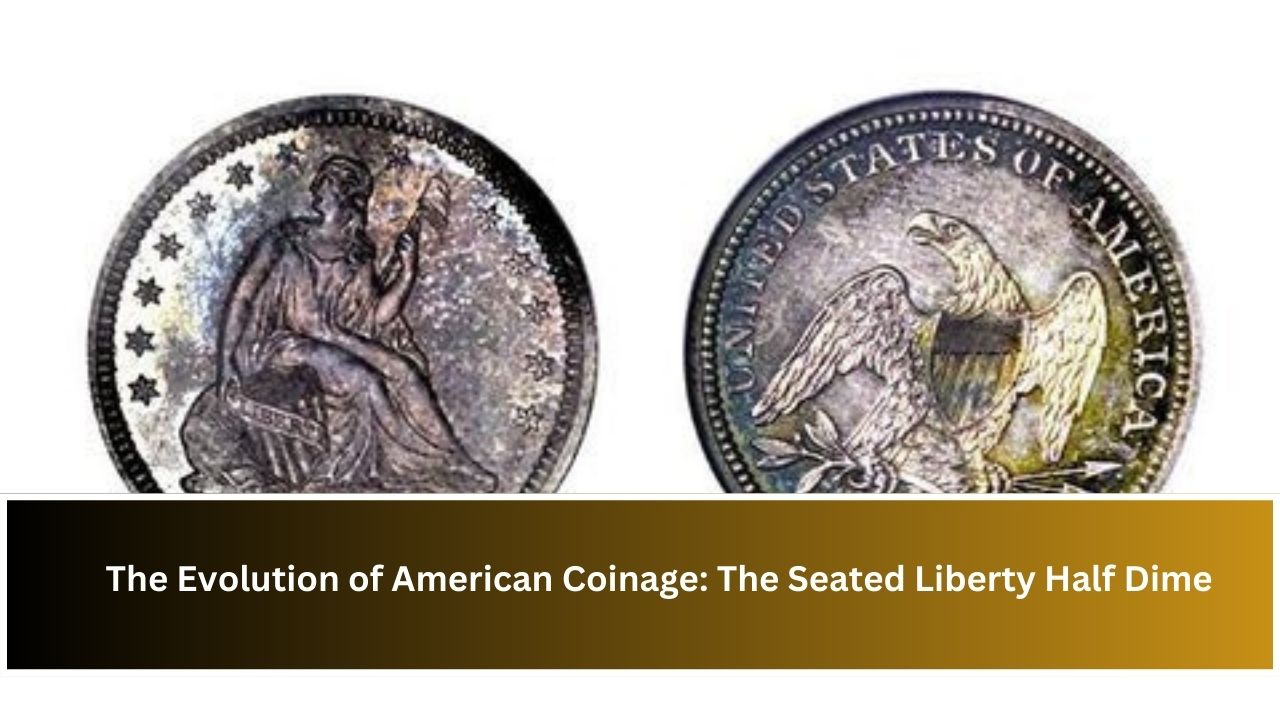American coinage has a rich history that reflects the country’s evolving culture and values. One of the most iconic series in U.S. numismatics is the Seated Liberty Half Dime. Minted from 1837 to 1873, these small but significant coins played a crucial role in shaping the monetary system of the time. In this article, we’ll explore the evolution of the Seated Liberty Half Dime, its unique design, and its lasting impact on American coinage.
The Seated Liberty Half Dime holds a special place in American coinage history. With its distinctive design and limited production, these coins have become cherished pieces for collectors. Whether for their historical significance or investment potential, Seated Liberty Half Dimes continue to capture the attention of numismatists worldwide
The History of the Seated Liberty Half Dime
Origins and Design
The Seated Liberty Half Dime was first introduced in 1837 as part of a broader effort to create uniform designs for U.S. coinage. Designed by Christian Gobrecht, the Seated Liberty Half Dime features Liberty seated on a rock, holding a shield and olive branch, symbolizing strength and peace. The design was created to reflect the country’s values during a time of national growth and development.
Minting Process
During its mintage period, the Seated Liberty Half Dime was produced at several U.S. Mint locations, including Philadelphia, New Orleans, and San Francisco. The variations in mint marks make certain issues more desirable for collectors today.
Features and Rarity of the Seated Liberty Half Dime
Design Elements
The obverse side of the Seated Liberty Half Dime showcases Liberty seated with a shield in her left hand and an olive branch in her right hand. The reverse features a wreath enclosing the denomination, with “UNITED STATES OF AMERICA” around the rim.
Rarity and Value
Due to its limited mintage and age, the Seated Liberty Half Dime is highly collectible. The 1873 Seated Liberty Half Dime, in particular, is one of the rarest, with only a small number produced. Coins in high-grade condition fetch premium prices at auctions and in private collections.
Factors Affecting the Value of Seated Liberty Half Dimes
Condition and Grading
The condition of a Seated Liberty Half Dime is critical in determining its value. Coins that are well-preserved and graded by respected services like PCGS or NGC typically have higher prices.
Mint Marks
Mint marks can significantly affect a coin’s value. Coins minted in New Orleans (O) or San Francisco (S) are more sought after due to their lower production numbers compared to Philadelphia-minted coins (no mint mark).
Table: Seated Liberty Half Dime Values by Year
| Year | Mint Mark | Estimated Value (Good Condition) | Rarity |
|---|---|---|---|
| 1837 | None | $2,000 – $5,000 | Rare |
| 1853 | O | $1,500 – $4,000 | Limited |
| 1866 | S | $1,200 – $3,000 | Collectible |
| 1873 | None | $15,000 – $30,000 | Extremely Rare |
Conclusion
The Seated Liberty Half Dime holds a special place in American coinage history. With its distinctive design and limited production, these coins have become cherished pieces for collectors. Whether for their historical significance or investment potential, Seated Liberty Half Dimes continue to capture the attention of numismatists worldwide
FAQ’s
1. What makes the Seated Liberty Half Dime valuable?
Its historical significance, limited mintage, and well-preserved condition are key factors contributing to its value.
2. How many Seated Liberty Half Dimes were minted in 1873?
Only a small number were produced in 1873, making this year particularly rare and valuable.
3. What is the most valuable Seated Liberty Half Dime?
The 1873 variety, especially those in high-grade condition, can sell for tens of thousands of dollars.
4. Which mint marks are the most desirable for collectors?
Mint marks like New Orleans (O) and San Francisco (S) are highly sought after due to their limited mintage.

